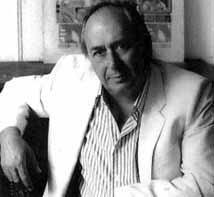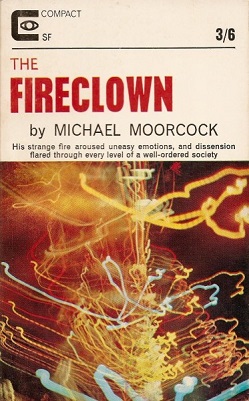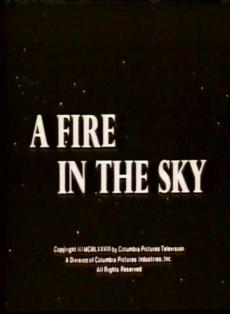
James Graham Ballard was an English novelist and short story writer, satirist and essayist known for psychologically provocative works of fiction that explore the relations between human psychology, technology, sex and mass media. Ballard first became associated with New Wave science fiction for post-apocalyptic novels such as The Drowned World (1962), but later courted political controversy with the short-story collection The Atrocity Exhibition (1970), which includes the story "Why I Want to Fuck Ronald Reagan" (1968) and the novel Crash (1973), a story about car-crash fetishists.

Tikal is the ruin of an ancient city, which was likely to have been called Yax Mutal, found in a rainforest in Guatemala. It is one of the largest archeological sites and urban centers of the pre-Columbian Maya civilization. It is located in the archeological region of the Petén Basin in what is now northern Guatemala. Situated in the department of El Petén, the site is part of Guatemala's Tikal National Park and in 1979 it was declared a UNESCO World Heritage Site.

One Canada Square is a skyscraper in Canary Wharf, London. It is the third tallest building in the United Kingdom at 770 feet (235 m) above ground level, and contains 50 storeys. It achieved the title of the tallest building in the UK upon completion in 1991 and held the title for 21 years until the completion of The Shard (310m) in 2012.

A dungeon is a room or cell in which prisoners are held, especially underground. Dungeons are generally associated with medieval castles, though their association with torture probably derives more from the Renaissance period. An oubliette or bottle dungeon is a basement room which is accessible only from a hatch or hole in a high ceiling.

Air raid shelters are structures for the protection of non-combatants as well as combatants against enemy attacks from the air. They are similar to bunkers in many regards, although they are not designed to defend against ground attack.

A storm shelter or storm cellar is a type of underground bunker designed to protect the occupants from violent severe weather, particularly tornadoes. They are most frequently seen in the Midwest and Southeastern United States where tornadoes are generally frequent and the low water table permits underground structures.

Concrete Island is a novel by British writer J. G. Ballard, first published in 1974.

The "tourist guy" was an internet phenomenon that featured a photograph of a tourist on the observation deck of the World Trade Center digitally altered to show a plane about to hit the tower in the background during the September 11 attacks. The photo went viral in the days after the attacks as many manipulated pictures spread online. The man in the photograph was identified as Hungarian Péter Guzli, who took the photo in 1997. Guzli said he edited the photo as a joke for his friends and did not intend for it to spread across the internet.

The War in the Air: And Particularly How Mr. Bert Smallways Fared While It Lasted is a military science fiction novel written by H. G. Wells and published in 1908.

The Sheep Look Up is a science fiction novel by British author John Brunner, first published in 1972. The novel is decidedly dystopian; the book deals with the deterioration of the environment in the United States. It was nominated for the Nebula Award for Best Novel in 1972.
RE/Search Publications is an American magazine and book publisher, based in San Francisco, founded by its editor V. Vale in 1980. In several issues, Andrea Juno was also credited as an editor. It was the successor to Vale's earlier punk rock fanzine Search & Destroy (1977–1979), which was started with small donations, provided to Vale by Allen Ginsberg and Lawrence Ferlinghetti. RE/Search has published tabloid-sized magazines and books.

The Fireclown is the fourth science fiction novel written by Michael Moorcock, published by Compact in 1965.

RMS Titanic sank in the early morning hours of 15 April 1912 in the North Atlantic Ocean, four days into her maiden voyage from Southampton to New York City. The largest ocean liner in service at the time, Titanic had an estimated 2,224 people on board when she struck an iceberg at around 23:40 on Sunday, 14 April 1912. Her sinking two hours and forty minutes later at 02:20 ship's time on Monday, 15 April, resulted in the deaths of more than 1,500 people, making it one of the deadliest peacetime maritime disasters in history.

Aaron Perry Taylor-Johnson is an English actor. He is best known for his portrayal of the title character in Kick-Ass (2010) and its 2013 sequel, and the Marvel Cinematic Universe character Pietro Maximoff in Avengers: Age of Ultron (2015).

Flood is a 2002 disaster thriller novel by Richard Doyle. Set in present-day London, the novel depicts a disastrous flood and fire of London, caused by a storm, and the consequential accident at an oil refinery, and failure of the Thames Barrier. The plot is similar to his 1976 novel Deluge, updated to include the construction of the Thames Flood Barrier.

A Fire in the Sky is a made-for-television disaster movie that debuted on NBC on November 26, 1978. The movie is based on a story by Paul Gallico where the earth is threatened by a large comet, which impacts near Phoenix and causes massive destruction there. It is a Bill Driskill Production in association with Columbia Pictures Television.

Structural integrity and failure is an aspect of engineering that deals with the ability of a structure to support a designed structural load without breaking and includes the study of past structural failures in order to prevent failures in future designs.

Climate fiction is literature that deals with climate change. Generally speculative in nature but inspired by climate science, works may take place in the world as we know it, in the near future or in fictional worlds experiencing climate change. The genre frequently includes science fiction and dystopian or utopian themes, imagining the potential futures based on how humanity responds to the impacts of climate change. The genre typically focuses on anthropogenic climate change and other environmental issues as opposed to weather and disaster more generally. Technologies such as climate engineering or climate adaptation practices often feature prominently in works exploring their impacts on society.

High-Rise is a 2015 British dystopian thriller film directed by Ben Wheatley from a screenplay by Amy Jump, based on the 1975 novel of the same name by J. G. Ballard. The film stars Tom Hiddleston, Jeremy Irons, Sienna Miller, Luke Evans, and Elisabeth Moss.
"Atrocity Exhibition" is a song by the English post-punk band Joy Division. It is the opening track on their second and final album Closer. The song was produced by Martin Hannett and Joy Division. It was recorded at Pink Floyd's Britannia Row Studios in London.

















